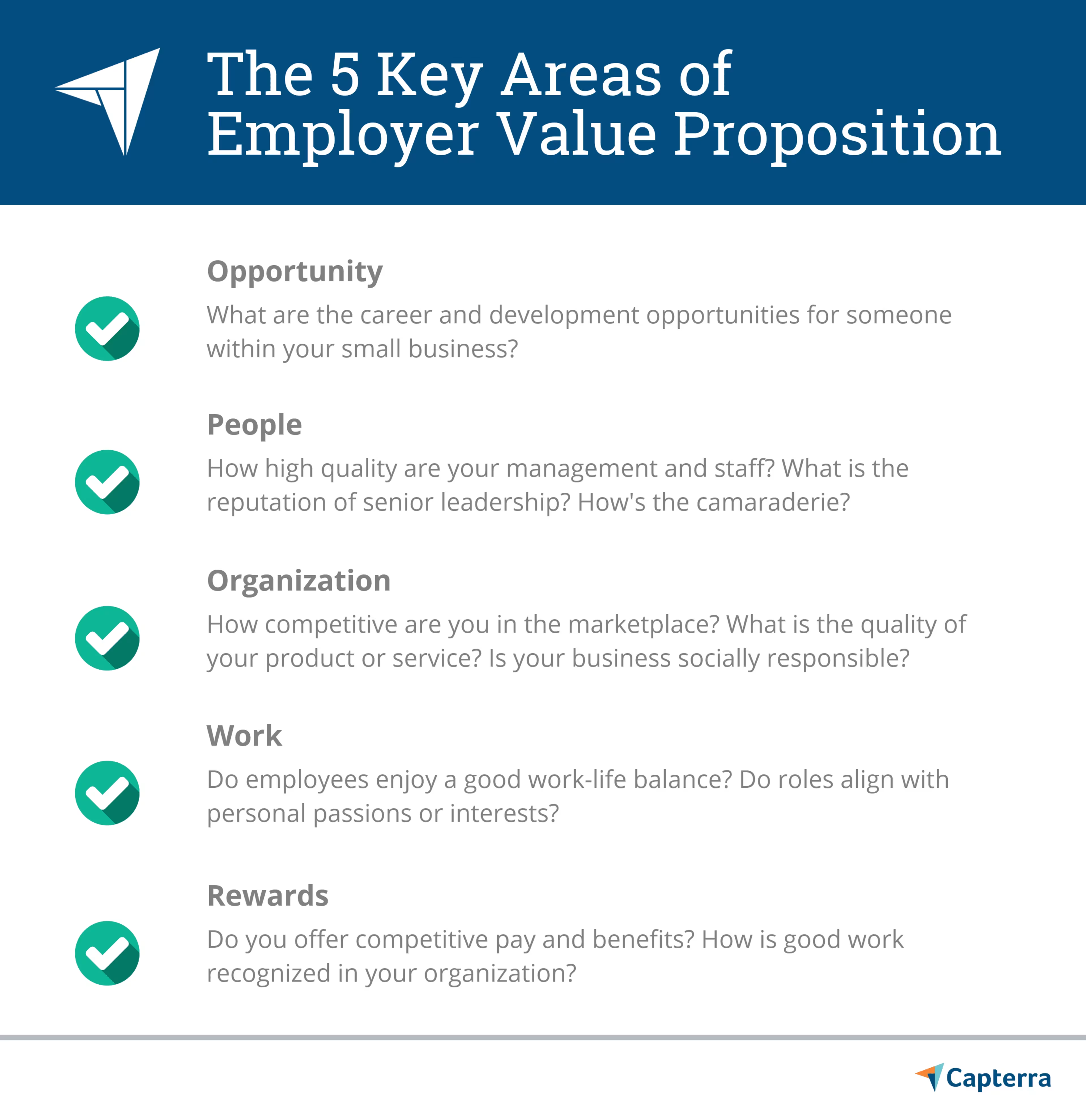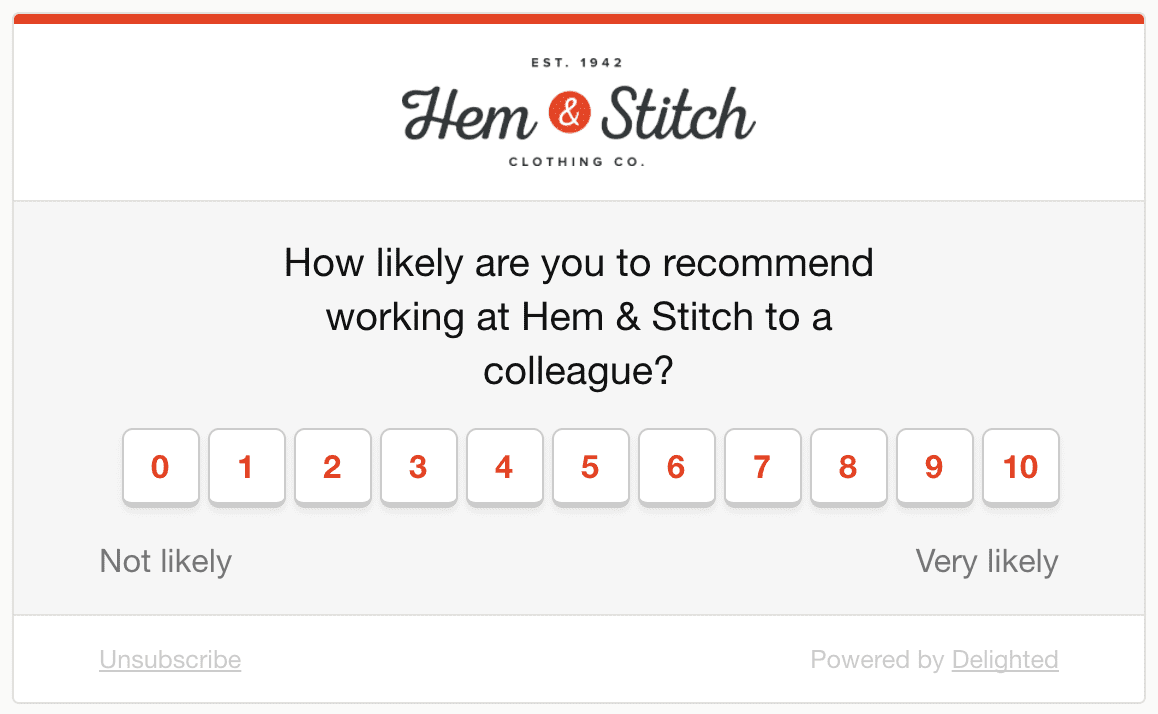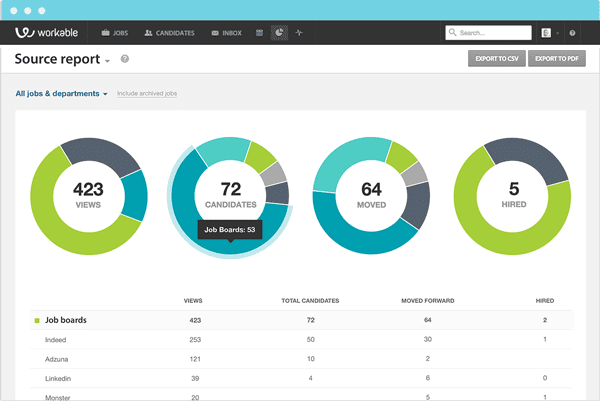You may not realize it, but your small business is currently competing with Amazon, Apple, and every other recognizable brand in the United States.
You're not competing with those behemoths for market share or revenue, though. You're competing for talent.
A one-two punch of record-high job openings and record-low unemployment has pitted small businesses and big brands directly against one another for a limited pool of skilled workers.
While big brands can get by on simply being who they are, small businesses have to make that extra effort just to get noticed. Between a no-name startup or a company such as Google, which would that engineer, designer, or project manager really rather have on their resume?
Does that mean small businesses are doomed while big brands scoop up all the highly skilled job seekers? Not necessarily.
There's one weapon your small business has that can help win this war for talent: company culture.

According to a Korn Ferry survey of talent acquisition professionals, company culture has surpassed benefits packages to become the number one reason why candidates choose one job over another.
That's good news, because while the company culture at a large enterprise is a stubborn and sluggish thing—systematically ingrained and immutable by any one employee—the company culture at your small business is malleable and can be transformed to attract job seekers.
So if you've been ignoring your company culture, or assumed it was something beyond your control, it's time to take the reins. Small businesses that create a visible, unique company culture can compete against recognizable brands for talent and increase the number of job applicants they receive by 24%.
To get you on the right track, here are three tactics you should leverage to build a company culture at your small business that can steal job seeker attention away from big brands.
Tactic #1: Craft a strong employer value proposition (EVP)
When it comes to building your corporate culture, you've undoubtedly been told how important it is to come up with a good company mission statement and a set of associated company values. (If you need help with this step, there's some advice here and here.)
Most companies will do this and call it a day. But it's not enough.
Your mission statement and values get at how your employees will benefit your small business, but what about how your small business will benefit your employees? Job seekers arguably care about this more.
That's why you also need to craft what's known as your employer value proposition (EVP), which Gartner defines as “how the labor market and employees perceive the value employees gain by working in an organization."
Essentially, your EVP answers “what's in it for me?" for job seekers, and it does so across five key areas: opportunity, people, organization, work, and rewards.

Presenting an authentic and, more importantly, a differentiated EVP from everyone else is incredibly important to attracting job seekers. But it's also very difficult.
Here are some common trappings you want to avoid in your EVP:
Focusing on attributes that job seekers don't care about. Do you have a pingpong table and free beer in the office? Fun! But job seekers don't really care about that stuff.
Having a significant gap between the promise and reality. Don't say you'll help employees become the top expert in their field if you can't guarantee it will happen.
Not having an employee voice to support your claims. EVPs without employee feedback, or some proof that they're practiced, risk coming across as propaganda.
If you're stuck, look at your company's own products or services. What is the unique value that customers get from your business?
As Gartner points out in a few examples, the best EVPs tend to mirror what's appealing about the customer-facing brand (full research available to Gartner clients):
A luxury retailer known by customers for high standards in quality, creativity, and artistic expression also emphasizes those values internally in their EVP. Employees are expected to hold each other up to the same high standards.
Employees at a customer service center that specializes in the ability to handle high call volumes at a low cost expect internal efficiency as well. The EVP is centered around high productivity, effective protocols, and optimized shift schedules.
A bleeding-edge tech company known for pushing the boundaries of what's possible doesn't operate like standard businesses. Employees are encouraged to continuously innovate and question current processes and strategies.
Once you've hit on an EVP you think will resonate, shout it from the rooftops. Highlight your EVP in your job postings, on your careers page, at career fairs, and anywhere else that will be seen by job seekers.
It's a lot of effort, but a good EVP will be worth it in the end: Not only will job seekers come flocking, but your current employees will become more engaged too.
According to Gartner, organizations that effectively deliver on their EVP can "decrease employee turnover by just under 70% and increase new hire commitment by nearly 30%."
Tactic #2: Don't just preach diversity—practice it
The push for more diversity in the workplace isn't merely a feel-good story. Job seekers increasingly value a diverse workplace, and numerous studies have shown that diverse companies perform better.
Yet it's here, once again, where small businesses—especially tiny startups—are at a distinct disadvantage to big businesses. Blame the math: A company of 5,000 people is almost always going to be more diverse than a company of 50 people.
Making matters more difficult is the fact that you can't fight a lack of diversity directly. Hiring based solely on race, gender, or age is a big no-no according to the EEOC.
So, what are you supposed to do? Well, there are a few things:
Broaden your horizons when it comes to candidate sources
If you always go back to the same well to look for job candidates—the same college, the same job board, etc.—odds are you're going to end up with the same kind of employees.
To fight this tendency, consider new wells. PowerToFly, for example, connects companies with women looking for jobs in tech, sales, and marketing. Employ Diversity specializes in employment for minorities.
Adding more diverse people to your applicant pool will increase the odds you ultimately make a diverse hire.
Assess what you're really doing when you hire for “cultural fit"
You've cemented what you want your company culture to be, and now you're hiring people that can actually put that culture into practice. That's great. What's not great is conflating someone who's a good cultural fit with someone who just looks like your existing workforce.
If you're doing some sort of cultural fit assessment with your job candidates, make sure you're asking questions that directly pertain to work and culture and not just asking if they're a fun person to hang out with.
Here are some examples of good cultural fit questions:
What's your dream job?
What is your ideal work schedule?
What do you hope to achieve during your first six months here?
What does work-life balance mean to you?
Eliminate other biases in your hiring practices
Are you using biased language in your job postings (e.g., using the term “salesman" instead of “salesperson")? Are you using the same criteria to rate every job applicant? Does a group of people have a say on hiring decisions, or does it ultimately come down to just one person?
To compete against big brands, you need to ensure you're not unintentionally closing the door on any promising candidates, and these subtle biases in your hiring practices can creep up easily to do just that. Audit your existing processes to ensure you're being as objective as possible.
Tactic #3: Measure culture success through eNPS and employee referrals
You've defined your mission statement, your values, and your EVP (and made them incredibly visible to current and potential employees alike). You've made real efforts to attract the widest range of job seekers possible.
But how do you know you're on the right track? Because culture is so intangible, and it's so hard to see change on a day-to-day basis, it can be difficult to tell whether you're having the impact you want.
Ultimately, you know you have a winning company culture when workers don't just like being there, but actually brag how awesome your company is to others. And there's a metric that measures exactly this: Employee Net Promoter Score, or eNPS.
To measure eNPS in your organization, all you need to do is send out an anonymous survey to every employee in your organization with one question:
“On a scale of 0 – 10, how likely are you to recommend working at this company to a colleague?"
When the results come back, bucket them as either Detractors (those that responded 0 - 6), Neutrals (those that responded 7 or 8), or Promoters (those that responded 9 or 10). Finally, to get your eNPS, subtract the percent of responses that are Detractors from the percent of responses that are Promoters:
eNPS = % Promoters - % Detractors
eNPS scores can range from -100 to 100. If you're in the negatives, that means there's room to improve. If you score a 10, that's pretty good, and if you're in the 30-50 range, that's excellent.
Send out your eNPS survey on a monthly, quarterly, or annual basis to continuously monitor this important metric and make adjustments to your culture and your hiring practices as needed.
An employee engagement software system can make this process relatively painless by automating survey administration, response collection, and eNPS score calculation.
There is a major downside to eNPS though, and it's that survey responses don't always correlate with tangible results. Employees may say that they would recommend working at your small business to a colleague, but how many actually do it?
Which is why you also need to measure stats related to employee referrals; both the number of referrals submitted, and the number of referrals that are ultimately hired.
You want to track employee referrals for two reasons. First, they're a consistent top source for quality hires. And second, they're candidates that applied to your business because of internal word-of-mouth: the ultimate indicator that you've built a company culture that's making a positive impression.
For more tips on how you can increase employee referral program participation, head here.
And if you're looking for a way to track employee referral hires and monitor the success (or lack thereof) of your employee referral program over time, invest in a good recruiting software solution. You'll need one to stay on top of your hiring needs as you grow anyway.
Company culture is never “done"
You may not have the resources or the name recognition of a Google or a Facebook, but using the tactics here, you can craft a company culture that entices job seekers to at least consider your small business as their next employer.
But be careful: Your company culture is not something you can simply check off your task list. It's an ever-evolving thing, especially when you're a small business. It requires constant attention and care to avoid becoming something that sends job seekers running the other way.
For more help, check out these other Capterra resources:

